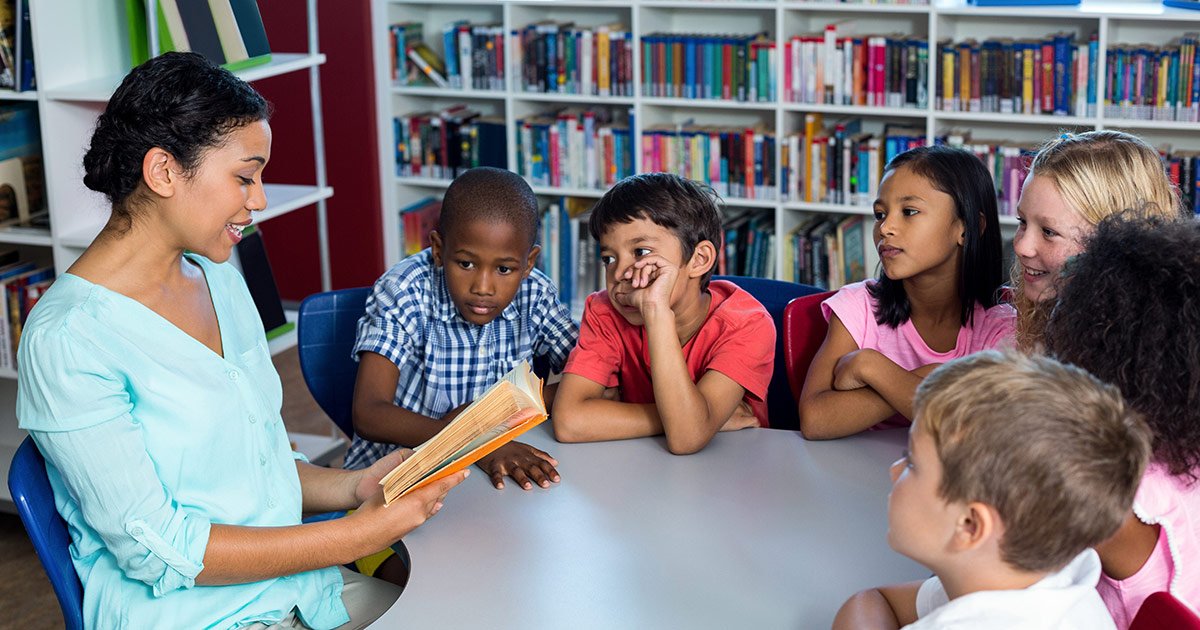
If you think about it, stories are the very origin of education. The passing down of stories from generation to generation taught us history, culture, skills, and knowledge. “Thinking of teaching as storytelling…encourages us to think of the curriculum as a collection of the great stories of our culture,” says Kieran Egan. “If we begin to think in these terms, instead of seeing the curriculum as a huge mass of materials to be conveyed to students, we can begin to think of teachers in our society as connected with an ancient and honored role. Teachers are the tellers of our culture’s tales.” In the classroom, storytelling can be used to teach content, build community, and heal trauma. Here’s how.
Sharing personal stories in the classroom
Storytelling in school can be a powerful method for building empathy and community as well as for teaching active listening, writing, and speaking skills. Students of trauma may find storytelling an especially powerful tool for remembering, processing, and healing traumatic experiences. “When we return and start to plot-point our trauma narrative, we live through our story in a new way,” says Dr. Deborah Serani. “Our personal narrative offers us a chance for not just understanding, but for reorganizing our sense of self. A self that was wounded, broken, frightened, or lost — but can now be reclaimed. The power of telling your story allows you to transform the foreign into the familiar — making the unspeakable speakable. Your narrative, and yours alone, can bring you awareness and closure.”
Skills building through storytelling
The skills needed to write and share personal stories are useful beyond the assignment. “Active and critical listening, asking great questions, and tips for effective interviews are core skills that can support research, personal reflection, essay writing, and other activities that are central to the classroom experience,” says Colleen J. Ross, Managing Director, Marketing & Communications at StoryCorps. StoryCorps is a national organization that has given nearly 500,000 people — Americans of all backgrounds and beliefs, in towns and cities in all 50 states — the chance to record interviews about their lives. The recordings are archived in the Library of Congress, the largest single collection of human voices ever gathered. Additionally, stories are shared through StoryCorps’ podcast, radio broadcasts, animated short films, and digital platforms. StoryCorps also has an education program that includes lessons teachers can use for storytelling practice in the classroom. “The lessons offered by StoryCorps offer students, principally ages 13 and over, the means to explore and understand the power of their own voices and know that their experiences matter,” says Ross. Storytelling also helps students to “learn about the power and importance of listening and to find strength in stories of people like themselves, who succeeded despite personal challenges and social barriers.” The first five free lesson plans are available at StoryCorps, and consider the StoryCorps App (free for smartphones) as a tool that students can use for interviewing people in their lives and documenting their own experiences.
Sharing stories to learn content
History comes alive when it’s told as a story, but so too can other classroom topics. Teachers can help students remember and learn new concepts by teaching in story form. This can happen by using fiction to help students process science concepts or by having students share their understanding of a topic through digital storytelling. The object is to use a narrative element to humanize and deepen learning. “Storytelling is an art form, a creative process — and all art has the possibility to move others and to captivate,” says The Storied Classroom. “Most importantly, storytelling is simply part of our humanity – part of our shared DNA. It soothes and feels like a warm blanket around us.” Using story as a teaching tool can build student engagement and allows students to visualize content in their minds. “ A 2010 study in the Proceedings of the National Academy of Sciences showed an intimate connection between the brain activity of speakers and listeners in conversation, demonstrating how the brain of an engaged listener “syncs up” with a speaker,” says A.J. Juliani. “By engaging students with compelling stories that impart important material, teachers reach students both emotionally and biochemically, increasing the potential for rich learning experiences.”
Jennifer L.M. Gunn spent 10 years in newspaper and magazine publishing before moving to public education. She is a curriculum designer, a teaching coach, and high school educator in New York City. She is also co-founder of the annual EDxEDNYC Education Conference for teacher-led innovation and regularly presents at conferences on the topics of adolescent literacy, leadership, and education innovation.
